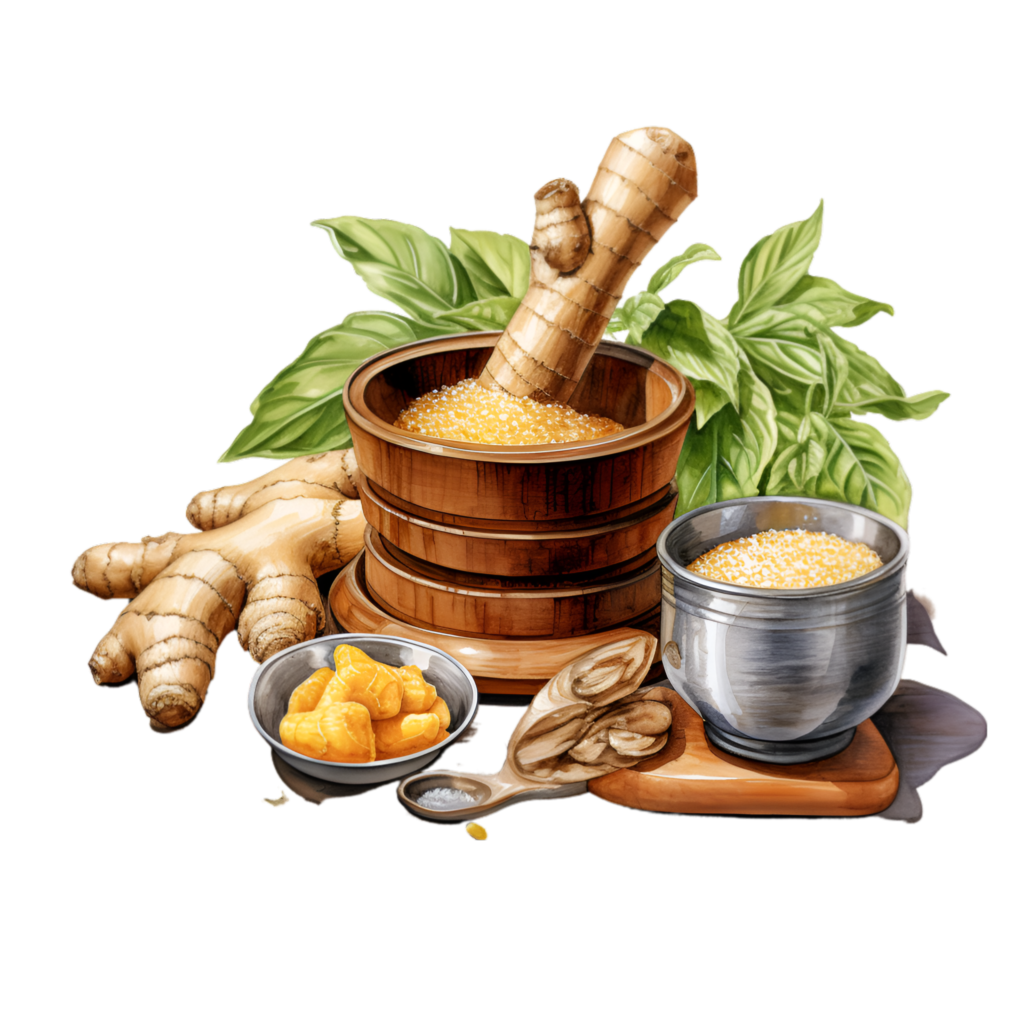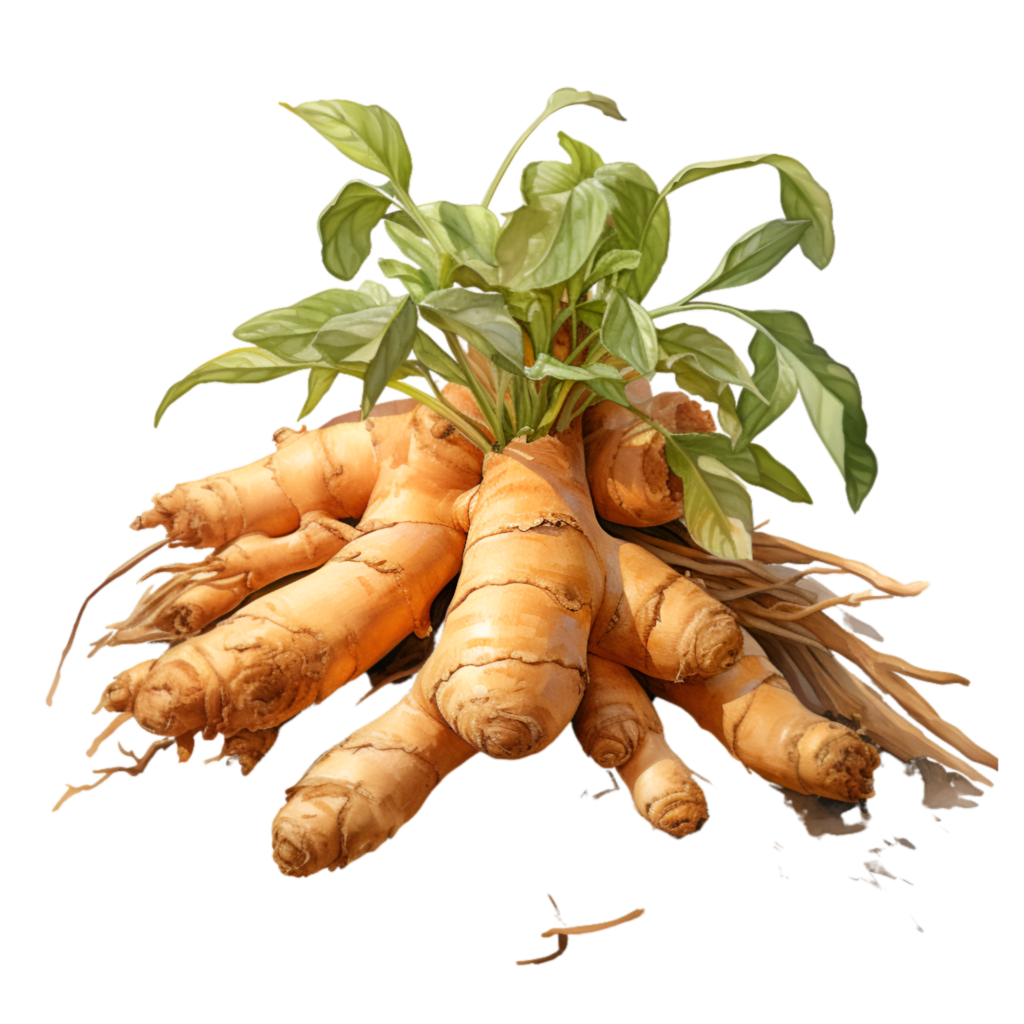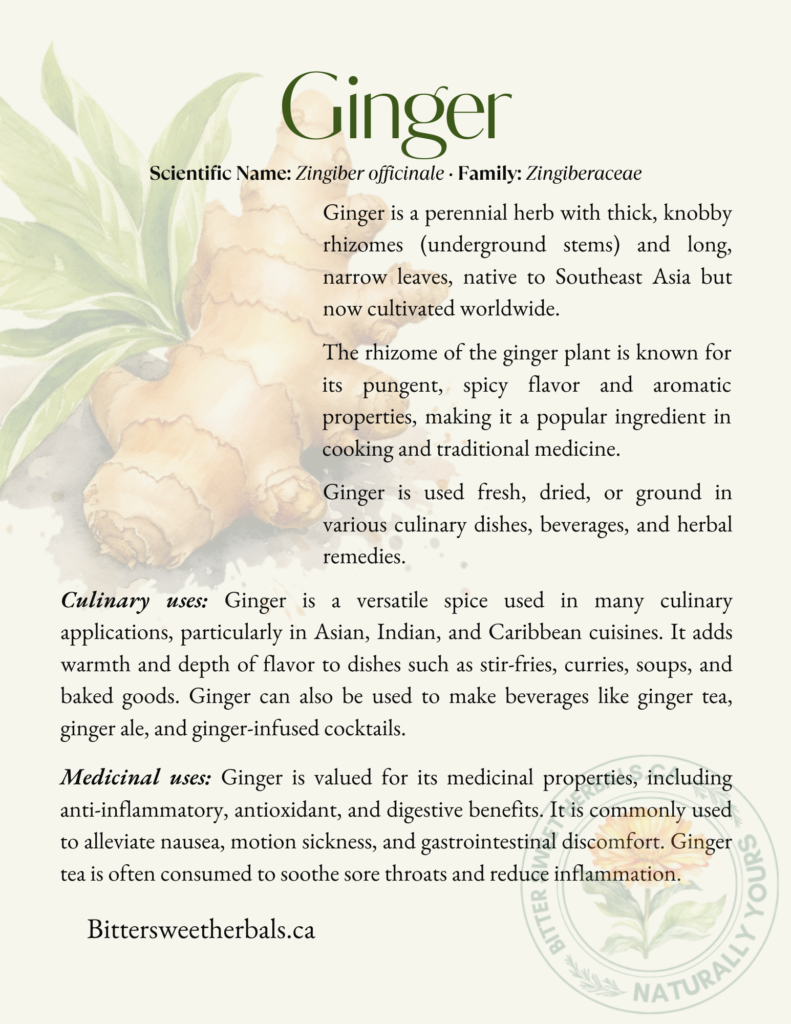The Story of Ginger
Long ago, in the warm, fertile lands of Southeast Asia, there grew a plant that was both revered and cherished for its powerful healing properties. Its underground rhizome was knotted and golden, and its taste was fiery yet comforting. This plant was ginger, and its story is one of warmth, strength, and vitality. For centuries, it has been known as the “spice of life,” bringing warmth to cold bodies, soothing troubled stomachs, and igniting the spirit with its fiery essence.
The story of ginger begins in a small village nestled near the banks of a wide, flowing river. The people of the village lived in harmony with the land, relying on the herbs and plants that grew around them for both nourishment and medicine. The village healer, an old woman named Kaya, was known for her wisdom and her ability to heal even the most stubborn ailments. Among all the herbs in her garden, there was one that she prized above all others: ginger.

Kaya had learned about ginger from her mother, who had learned it from her own mother before her. It was said that the ginger root held within it the fire of the earth itself, a warmth that could chase away illness and restore balance to the body. Whether it was a child with a cold or an elder with aching joints, ginger was always the first remedy Kaya reached for, and it never failed to bring relief.
One day, the village was struck by a bitter cold that blew down from the mountains, carrying with it illness and fatigue. The people, who were used to the warmth of the sun, found themselves shivering, their bodies weak and their spirits low. Fevers spread, chills set in, and the village was soon overcome by sickness. The young and old alike were bedridden, too weak to work, their stomachs knotted with nausea and their limbs heavy with aches.
Kaya, too, felt the effects of the cold wind, but she knew that the answer lay beneath the soil. With determination, she ventured into her garden, her hands trembling from the chill in the air. She knelt beside the patch where her ginger grew, digging into the earth with steady hands. She unearthed the golden rhizomes, their spicy scent rising into the cold air as she harvested them with care.

Returning to her small hut, Kaya prepared a ginger tea, slicing the root into thin pieces and boiling it gently in water. As the tea simmered, the scent of ginger filled the room—a scent that brought warmth, comfort, and a promise of relief. Kaya added a touch of honey to the tea and poured it into cups, which she carefully delivered to the sick villagers.
The first sip brought immediate warmth. The fiery essence of ginger spread through their bodies, chasing away the cold that had settled in their bones. Their stomachs, once twisted in knots, began to relax. The nausea that had gripped them loosened its hold, and soon, the warmth of ginger had worked its way into every limb, soothing aches and restoring energy.

With each cup of ginger tea, the villagers grew stronger. Fevers broke, the chills lifted, and their bodies began to heal. Ginger, with its warming, invigorating nature, had restored their vitality. The village was alive again, thanks to the fiery root that had come from the earth.

As the people recovered, they marveled at ginger’s power. It was more than just a spice; it was a medicine, a root that could heal from the inside out. Kaya continued to use ginger in her remedies, not only for colds and fevers but for countless other ailments. Ginger soothed upset stomachs, relieved motion sickness, and eased inflammation in aching joints. It became a trusted ally in times of illness and a staple in the daily lives of the villagers.
The Legacy of Ginger
Over time, the fame of ginger spread beyond the village, across borders, and into far-off lands. Traders carried ginger on ships, sharing it with people around the world. In China, ginger was used to balance the body’s internal heat, a principle in Traditional Chinese Medicine. In India, ginger became a key ingredient in Ayurveda, used to ignite the digestive fire, or Agni, and to clear toxins from the body.

In the Middle East, ginger was added to sweets and teas, its warmth comforting travelers on long journeys. And in Europe, ginger became known as a spice that could both heal and delight the senses, used in everything from medicinal tinctures to festive baked goods.
Wherever it went, ginger was known as a warming, healing herb. Its ability to bring warmth to the body and mind made it a favorite not only for healing but for cooking, celebrations, and rituals. Whether in a cup of hot ginger tea, a spicy curry, or a soothing balm, ginger’s fire touched the lives of people all over the world.
The Wisdom of Ginger
Ginger is not only a remedy for the body but also a symbol of resilience and vitality. Its fiery nature teaches us that even in the coldest of times, there is warmth and strength to be found. It reminds us that healing can be both gentle and powerful, igniting the body’s natural processes and restoring balance.

Ginger’s anti-inflammatory properties make it a trusted ally for soothing sore muscles and joints. Its digestive benefits are well known, helping with everything from nausea to indigestion. And for colds, flu, and respiratory issues, ginger’s ability to warm and stimulate circulation makes it an essential remedy for fighting off illness.
Even in the most modern of times, ginger remains a beloved herb. Science has confirmed what healers like Kaya knew all along—that ginger is a potent anti-inflammatory, antioxidant, and digestive aid. It is used to ease arthritis pain, reduce nausea from motion sickness or chemotherapy, improve digestion, and boost the immune system.
The Fire of Healing
The story of ginger is one of warmth, resilience, and the healing power of nature. It reminds us that within the earth’s simplest gifts lies the strength to heal, restore, and nourish the body. Whether sipped as tea on a cold winter’s day, added to a hearty dish, or applied to soothe aching muscles, ginger’s fiery essence brings both comfort and vitality.
Ginger, the spice of life, teaches us that healing comes from within—from the warmth we kindle in our bodies, our hearts, and our spirits. And like the villagers who found relief in Kaya’s ginger tea, we too can turn to this humble root for strength, warmth, and the healing power of nature’s fire.
